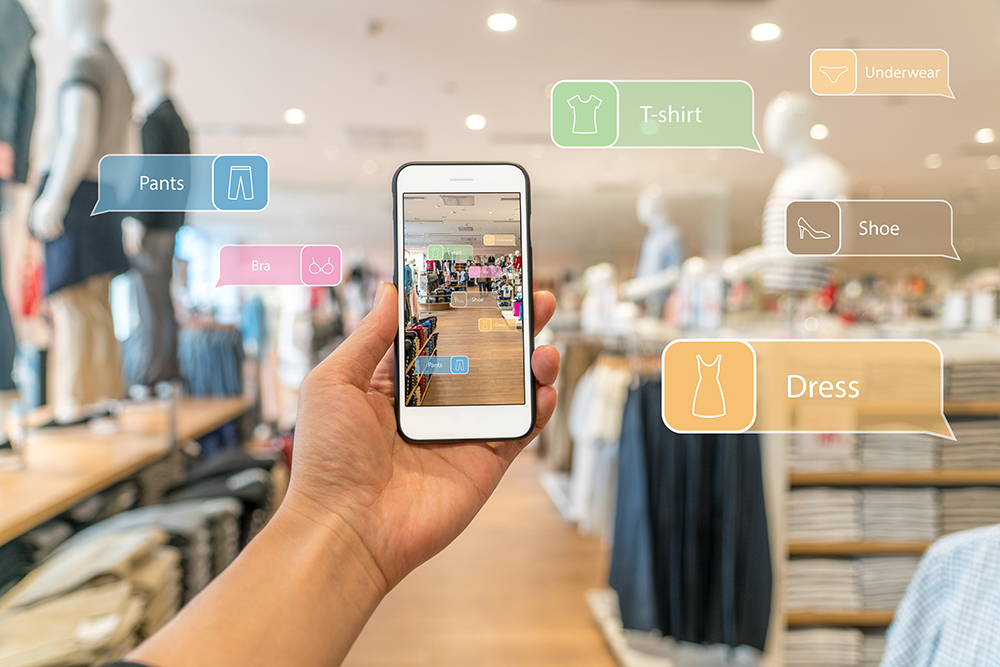Shopping experience to get mobile, personal and social

Mobile retail is set to rise, shopping is about to get a whole lot more personal and social media is set to enter a new phase as a real retail driver.
These are the big-ticket items tipped to emerge this year as Australian retail enjoys a reprieve from the doom and gloom of mid 2017.
So let’s take a look at what is set to hit the sector in 2018.
The latest figures
According to the latest Australian Bureau of Statistics figures, retail enjoyed a renaissance in late 2017, largely driven by a rise in online sales and the frenzy created by the iPhone X.
The result was a rise of 1.2 per cent in November 2017, seasonally adjusted, following on from a 0.5 per cent rise in October. December and Christmas figures are yet to be released but by all indications, the holidays were tipped to provide further good news for the retail sector.
“In seasonally adjusted terms, rises were led by the household goods (4.5 per cent) and other retailing (2.2 per cent) industries,” the Director of the Quarterly Economy Wide Surveys, Ben James, said of the November figures. “Seasonally adjusted sales in both these industries are influenced by the release of the iPhone X and the increasing popularity of promotions in November, including Black Friday sales.”
There were also rises for clothing, footwear and personal accessory retailing (1.6 per cent) and cafes, restaurants and takeaways (0.4 per cent). Department stores fell (-1.1 per cent) whilst food was unchanged in November 2017.
So what will drive the year ahead?
More mobile
Mobile technology is set to play more of a role in retail than ever before with an increase in purchases via mobile by consumers, and the continued implementation of mobile Point of Sale mobile Point of Sale (mPOS) by vendors.
mPOS software provider Shopify told Forbes: In the US almost 65% of Black Friday/Cyber Monday sales occurred on mobile across Shopify platforms in 2017, while outside their platform nearly 35% of e-commerce purchases were made on mobile in 2017, a rate that’s predicted to jump to nearly 40% over the year ahead.
Driving the trend are easier payment solutions and authorisation procedures like facial recognition, along with new technology like voice recognition that are set to revolutionise the payment landscape.
Better use of AI and AR
2017 saw the increased deployment of artificial intelligence and augmented reality to improve the retail experience, but 2018 will see it become more intuitive and refined, experts note.
“Chatbots, facial recognition technology, image recognition, robotics and more will offer opportunities this year. Retailers have a significant amount of data to power AI and deliver personalised, customised and localised experiences to surprise and delight customers. More data beats better algorithms every time, and retailers continue to generate significant amounts of data both online and offline,” Deborah Weinswig, managing director of Fung Global Retail & Technology told Forbes.
Meanwhile, major retailers like Ikea are already using augmented reality to enable consumers to visualise products within their home.
Big data
And when it comes to data, retailers will be using it in a whole host of ways. Not only will they be gathering information about consumer spending habits through online searches and queries, they will be better at marrying it with the data available in-store courtesy of retail analytics.
From traffic counting to heat mapping, and an increased use of RFID to track the supply chain and sales, data will continue to furnish retailers with greater opportunity to predict and respond to the demands of clientele.
Greater personalisation
The holy grail of the shopping experience and the data driving it will involve providing a more personalised retail encounter for consumers.
Just as Netflix tailors movie suggestions to your preferences and Pandora provides song sets, shopping online will continue to become more curated for an individual’s needs.
The likelihood is this will also cross into the real-world retail realm, with the omnichannel experience enabling product suggestions that can be enjoyed in-store. Meanwhile, beacon and near field communication will also ensure product suggestions and information based on consumer habits continue within the confines of the store.
Or as ANZ Bank notes: “Big data enables businesses to analyse information like never before. Consequently, retailers are now looking at ways to personalise the customer experience – as well as provide real-time information on payments and deliveries”.
“For example, customers now expect intelligent matching of ‘recommended products’ based on the programing of machine learning and artificial intelligence. They also expect to log into an account and see their preferences, or find out exactly where an order is at, anytime, anywhere.”
Social shopping
The past few years have seen the infiltration of a “buy now” button across a host of social media platforms but this year experts tip social media shopping will come into its own, driven by integrations with merchant services.
Fast Company explains Shopify has kicked off the trend.
“This fall, online commerce giant Shopify officially launched an Instagram integration, letting its merchants sell directly from the network. Considering that Instagram is fast closing in on 1 billion monthly active users and Shopify powers more than 500,000 businesses, we can expect to see an unprecedented range of products bought and sold on social media in 2018.”
In reality 2018 will see many of the tech trends considered futuristic steadily roll into the mainstream retail world. The trick for retailers will involve becoming conversant in the potential and deployment of technology.
Or as Rupa Ganatra, of Millennial 20/20 told Forbes: “Retail success in 2018 will be about how well retailers adapt to the changing market around them and the evolution of their customers’ needs. To stay relevant in the future, evolving well will be the key to success”.